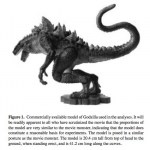japan
For its pure strangeness.
The Makura-gaeshi (âpillow-moverâ) is a soul-stealing prankster known for moving pillows around while people sleep. The creature is invisible to adults and can only be seen by children. Anatomical features include an organ for storing souls stolen from children, another for converting the souls to energy and supplying it to the rest of the body, and a pouch containing magical sand that puts people to sleep when it gets in the eyes. In addition, the monster has two brains â one for devising pranks, and one for creating rainbow-colored light that it emits through its…
Japanese artists' depiction of the horrors at Hiroshima.Hiroshima Peace Memorial Museum
On August 6, 1945 the United States dropped "Little Boy," the first of only two nuclear bombs ever used in warfare, on the Japanese civilians at Hiroshima. In an instant flash of light an estimated 140,000 people were either incinerated or suffered an agonizing death that lasted several days. The standard mythology is that President Truman dropped the bombs at Hiroshima and Nagasaki (three days later on August 9) in order to avoid having to send half a million American soliders to their deaths in a…
Love in 2-D:
Nisan didn't mean to fall in love with Nemutan. Their first encounter -- at a comic-book convention that Nisan's gaming friends dragged him to in Tokyo -- was serendipitous. Nisan was wandering aimlessly around the crowded exhibition hall when he suddenly found himself staring into Nemutan's bright blue eyes. In the beginning, they were just friends. Then, when Nisan got his driver's license a few months later, he invited Nemutan for a ride around town in his beat-up Toyota. They went to a beach, not far from the home he shares with his parents in a suburb of Tokyo. It was the…
Only one person on the crew spoke English, and this was the same person, a young woman named Akiko, who called herself a "production assistant," with whom I'd been in communication to arrange this whole thing, over the last many months.
The crew was from Japan and they were filming a documentary on evolution. Someone who knew someone who knew someone had attended a talk I had given a couple of years earlier at the University in Tokyo, and the producers of this documentary thought it would be interesting to include me in their documentary. The initial contact had been by phone from Akiko…
The Tokyo Zoo is prepared for anything. In this case, they foil the escape attempts of two employees in a giant paper maiche rhino outfit.
(fyi - this video is in fact still available, just blow in it a few times if it gives you trouble)
Via Arbroath via BoingBoing. From the YouTube comments and also pointed out by BoingBoing - Any simple task in Japan requires the effort of tens of aging men dressed in fluorescent jackets and hard hats.
Thanks Bill K.
As reported in the NY Times and elsewhere, an auction of 108 metric tons of ivory took place today in Namibia, Botswana, Zimbabwe and South Africa. The buyers were exclusively from China and Japan. Not surprisingly, this sale has raised the ire of animal welfare groups, such as the International Fund for Animal Welfare (IFAW).
You might be surprised to learn however that this was a legal auction sanctioned, and in fact run, by CITES, the Convention on International Trade in Endangered Species of Wild Fauna and Flora. So here are the facts:
* All of the ivory sold comes from government…
Aquarium staff at Kinosaki Marine World in western Japan recently noticed that their dolphins were less acrobatic in their performances and more lethargic in general. Concerned about their health, the dolphins were weighed and found to be significantly heavier since only a few months prior. Apparently a fattier mackeral, their typical breakfast, lunch, and dinner, was to blame. Aquarists quickly started calling the dolphins "fatty" and "fatty-fat-fat" and telling them no one would love them in an effort to get them to throw-up their meals after eating them. When that failed, they tried…
Maybe it's the upcoming election and the potential change that it portends. Or perhaps it's the Large Hadron Collider, bogged down with electric failures, that has ceded the science-news space to other subjects. In any case, the last week has seen a slew of exciting, weird, and prescient science news too exciting to ignore, and too varied to all discuss in depth.
For one, the impersonal blackness of space welcomed a new nation as the Chinese launched their much-anticipated Shenzhou VII spacecraft, manned with three "taikonauts" trained for the country's first spacewalk. Technologically…
Some people look at this and see a terrifying undersea monster with potrusible jaws like our old pal from Alien. I see my dog Izzy playfully tugging on my sleeve... after some sort of horrible experiment that mutated her into a nightmarish killing machine. Kidding kidding.
The goblin shark is a fascinating resident of the deep sea. They are most commonly associated with the waters around Japan where most specimens are recovered as by-catch from fishing trawlers. When a goblin shark finds its prey, it protrudes its jaws and uses a tongue-like muscle to suck the victim into its sharp front…
Sometimes, you find weird stuff on the internet. But sometimes you find even weirder stuff in scientific journals. To what do I refer? A paper in the Journal of Mathematical Geology back in 2000 entitled Godzilla from a Zoological Perspective, by Per Christiansen.
This was written as a critique of the "new Godzilla" movie, arguing that it is not more biologically plausible than the "old Godzilla" of 1954.
However, calculations show that his limbs and limb muscles must have been severely undersized to move his huge bulk around at even a leisurely pace, and most other biological problems with…
What makes earthquakes? Although there are many causes, including volcanoes, the most common thing that causes them are tectonic motions, which also cause tsunamis. But as valuable as it is to understand other planets in our solar system and in other star systems, sometimes it's important to understand what's going on inside our own planet.
The crust of the Earth actually is made up of a number of plates, which rub against one another and move over time. Who's to blame? I fault the liquid hot magma.
So what happens is that these plates slip against each other in one of three ways, as shown…
The Kirsch study published a few weeks ago has stirred much discussion of the placebo power of antidepressants (or is it the antidepressant power of placebos?); it's clear that the act of taking a pill that you expect to help you often does help you.
But can the availability of a pill meant for depression make you feel (or think of yourself as) depressed? That's the question behind another part of the drug debate, regarding whether the drug industry encourages us to medicalize ordinary experience.
In pondering these things I ran across this fascinating New York Times >article from 2004…
Chimpanzee walking bulldogs in some sort of bizarro world (i.e. Japan). We've delivered you some strange Japanese imports in the past, but this raises the bar.
A few months back we brought you the story of giant jellies invading Japan. Well on Tuesday, the cutting edge scientific publication known as the Wall Street Journal actually sent a reporter to cover the story. The article is only mildly interesting although I do find it fascinating that they embed this video in the article but still insist on creating little pencil-pointillism portraits of the characters in the story...
Tim Starr writes:
Japan classifies cases of husbands murdering their wives & kids then killing
themselves as all suicides, no homicides, thus skewing their statistics in
favor of suicides & against homicides.
This claim is easily seen to be false: You just have to look at the
Japanese suicide statistics. There are no recorded suicides of small
children.
That doesn't necessarily falsify the claim. How are "small
children" defined?
Under 5. And the suicide rate for 5-14 year olds is half of the US
rate.
How do you know that "family suicides" in Japan don't usually take place when…
Cristina Yu wrote:
You didn't mention Japan. Japan's such a safe place that they're murder rate
is almost as low as the murder rate for Americans of Japanese descent. Almost,
but not quite.
Wrong. Kleck says this on page 189 of "Point Blank", but he looked up
the wrong number (2.45) for the Japanese homicide rate.
Unless you consider self-murder, that is, in which case,
it's rather high. Their suicide is higher than our murder rate plus our
suicide rate combined.
Not any more (though it used to be true):
1990 rates per 100k population from WHO Statistical Yearbook
homicide…
In "Point Blank" Gary Kleck writes:
``One way one might crudely and partially control for United
States-Japan cultural differences is to compare homicide rates among
Japanese-Americans, who live where guns are plentiful, with the homicide
rates of their presumably culturally similar brethren in Japan, where
private gun ownership is nearly nonexistent. Certainly this pair of
populations is more comparable than the population of Japan compared
with the entire U.S. population.
Not necessarily. The US does not accept immigrants with criminal
records, so this group of Japanese-…

